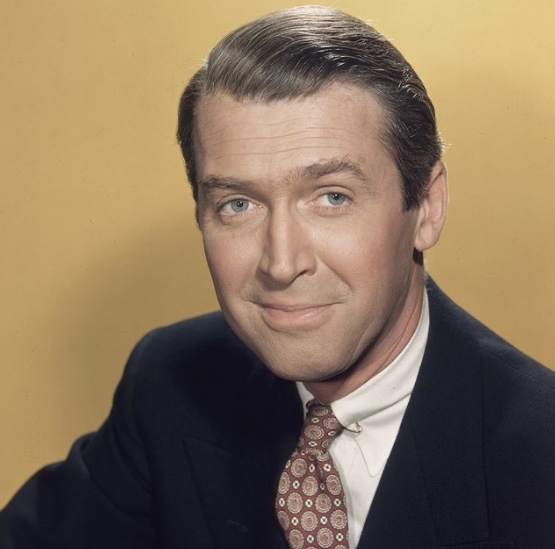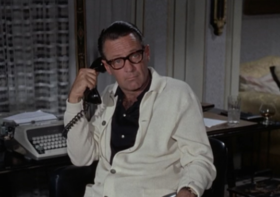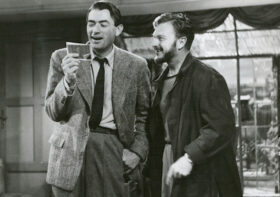Under-Appreciated Style Icons: James Stewart

My initial impulse was to name this article (and subsequent ones like it) “Lesser-Known Style Icons”. But that’s not really what I mean. The individuals I plan on discussing in this series are hardly unknowns. More accurately, they are not as well-recognized as icons of menswear as their contemporaries. These men are, in my opinion, a bit overlooked when it comes to their style, and they have some excellent lessons to teach us.
It feels like there is a dearth of true style icons these days. Prominent men in society who set the standard for what is considered proper dress. Men who represent a collective, agreed-upon, standard for what is stylish. As a father, I try to be that for my kids, but it’s always helpful having other people we dads can point to as shining examples of the correct way to present oneself.
Today I am going to delve into the style of Academy Award winning actor, literal American hero, and all-around nice guy, Jimmy Stewart.

Fans of classic Hollywood remember Stewart for his “awe-shucksy”, Everyman charm in gems like “Mr. Smith Goes to Washington”, “The Shop Around The Corner” and “The Philadelphia Story”. Later in his career, partly due to the emotional trauma he experienced in war, he expanded his range to include tortured souls and downright creepers in the likes of “It’s A Wonderful Life”, “Rear Window”, and “Vertigo”. These are some of the finest films ever made and watching Stewart do his thing is a true pleasure. But has he ever been held up as an icon of style? Maybe I’ve missed something, but I don’t believe he has.
Perhaps he is at a natural disadvantage, coming to prominence in the 1930s when there were such sartorial luminaries as Cary Grant and Fred Astaire. Lists of Hollywood’s best dressed men of all time pretty much begin and end with Grant, fittingly, as the undisputed king.

But if we compare Grant with Stewart when it comes to style, who was faced with the bigger challenge? Yes, Grant looked amazing all the time, but it wasn’t exactly difficult to dress him. Grant was a handsome, fit, 6’1” former acrobat. He could look great wearing anything.

Stewart, on the other hand, while still, undoubtedly, conventionally handsome, was about 140 pounds and almost 6’4”. He was a beanpole. His body was much more difficult to dress. But when you watch him on screen, you’re never struck by how gangly he truly was because his clothes fit so damn well. Even when onscreen with Grant, there isn’t an apparent difference in their body types.

At that time it was not uncommon for movie actors to wear some of their own clothes in movies. And this made sense for Stewart since he couldn’t really wear any ol’ thing off the rack given his extreme proportions.
If you take a close look at his wardrobes, you’ll see plenty of tweeds, double-breasted suits, rough textures, strong shouldered jackets, and high-waisted trousers. There is a scene in “The Philadelphia Story” when he opens his jacket to convince the butler he isn’t stealing anything and you can see just how full-cut his trousers are.
While none of these items are out of place for the time period, they are all excellent choices for a man of Stewart’s build. The combination of structures and textures help to fill out his trim frame to the point where you hardly even notice how thin he was. Also, while certainly more classically styled than most modern observers are used to, the relatively middle-of-the-road proportions of his clothes help mask his extreme height. Looking at him alone, he simply looks like a well-dressed man. It isn’t until he is towering over Donna Reed looking like Goofy in the retro football uniform that you really understand the skill this man possessed in dressing himself.

Unlike his contemporaries, Stewart makes great style seem accessible to the average guy because he WAS the average guy. Grant had his immaculate tuxedos. Astaire had his tails and, later, his necktie belt. But these guys exist way above us mere mortals, somewhere in the ether. Stewart looks like a guy you’d run into on the way to the post office. His approachable charm made even the rumpled tweed and distressed fedora he wore in “Harvey” look just as elegant as Chumley’s crisp suit and homburg.

The fact that he was so well-dressed but we only ever talk about his acting ability shows just HOW well-dressed he was. It was never the first thing anyone noticed about him. It didn’t announce him the way it did with Grant. Stewart was so well-dressed that you looked past the clothes to the man himself.
Wherever you are, General Stewart, thank you for your films, your impeccable style, and most importantly, your service to this country.

Now let’s take a moment to appreciate some, as the kids say, killer fits…















